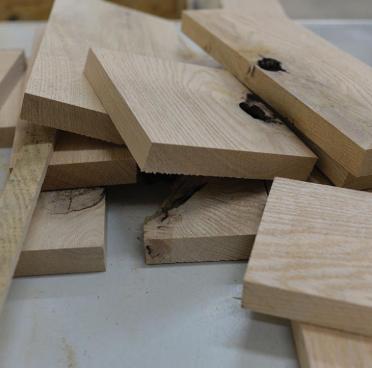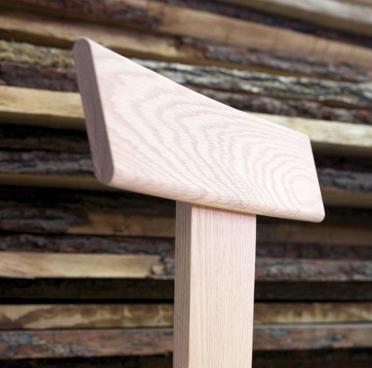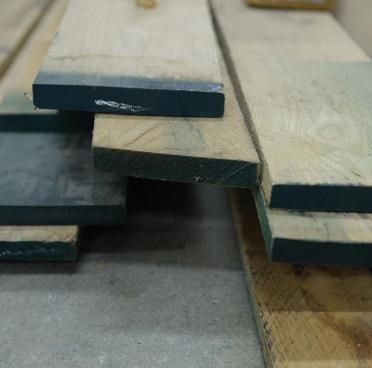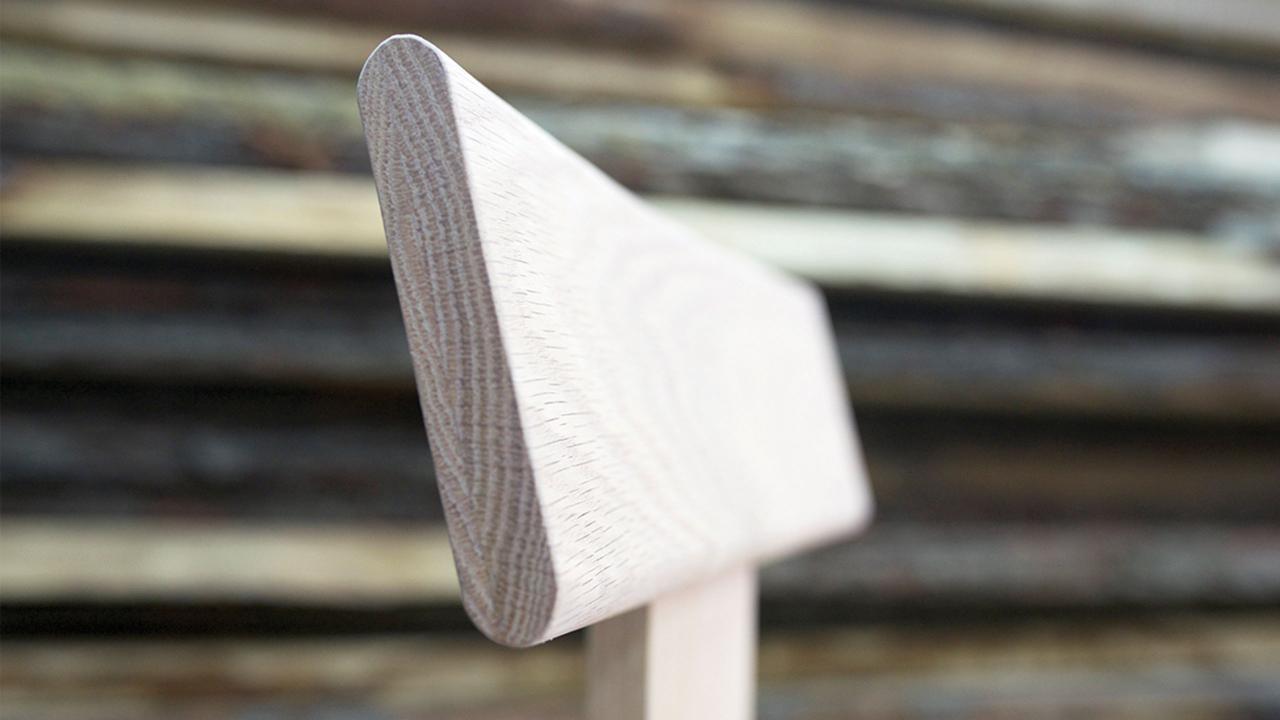High sustainable wood content
The high sustainable wood content of chair contributes to a very strong environmental profile for a bespoke furniture item. Over 96% of the mass of chair comprises red oak, the most abundant American hardwood with forest volume equivalent to around 2,500 million cubic meters, 18% of the total U.S. hardwood resource. Every year, the volume of red oak in U.S. forests grows on average by 55 million cubic meters, of which only 34 million is harvested. This means the volume standing in U.S. hardwood forests expands by 21 million cubic meters per year. It takes no more than a tiny fraction of a second for forest growth to replace the red oak used to manufacture the chair.

Extremely low carbon footprint
The carbon footprint of red oak chair is extremely low for a high-end product likely to have a long life and to be replaced only occasionally. At 9.84 kg CO2 eq., the carbon footprint of the chair is the same as driving less than 100 km in a typical European car and equal to the carbon emissions of the average European over a 12-hour period.
Emissions of 20 kg CO2 eq. during all processes to produce and transport the red oak from the U.S., to supply other materials, and to manufacture in Poland, are offset by 9.4 kg CO2 eq. stored in the finished chair and another 0.8 kg CO2 eq. due to burning of wood offcuts at the factory in Poland.
With low impacts at other life cycle stages, manufacturing in Poland accounts for a very large share of the overall environmental impact. Impacts at this stage are mainly due to use of a CNC machine powered by electricity from the Polish national grid which is 85% dependent on fossil fuels, the vast majority of which is coal. Strategies to increase the share of renewables (such as solar energy) in the supply of electricity during manufacturing would mitigate environmental impacts at this life cycle phase.

Red oak lumber much better than carbon neutral
The red oak lumber, at point of delivery at the Polish factory, was much better than carbon neutral. Total emissions to deliver the 6.84 kg of red oak required for the chair were 5.5 kg CO2 eq., more than offset by 10.4 kg CO2 eq. of carbon sequestered in the wood when the tree was growing.
This highlights that the carbon footprint of wood products tends to be much more sensitive to the quantity and mix of energy used during manufacturing than to transport. This is true even with long and complex transport scenarios. In this instance, the US hardwood was required to travel 1400 km by truck in the US (assuming transport from geographic central point of red oak harvest to sawmill & kilning facilities and from there to Norfolk, the leading East Coast port for red oak) and then 6500 km by container ship to Antwerp, then 100km by truck to the distributor in Belgium, and then a further 1500 km by road to the manufacturer in Warsaw.
Despite this, emissions to transport the wood for the chair were no more than 3.15 kg CO2 eq., considerably less than emissions of 14.1 kg CO2 eq. resulting from use of mains electricity in Poland during manufacturing.
For wood products, kiln drying can often be a more significant factor in driving emissions than transport, simply because of the length of time that wood must remain in the kilns. However, in this instance the use of thinner lumber, which dries more quickly, meant that kiln drying was a relatively minor contributor to the overall environmental footprint.


